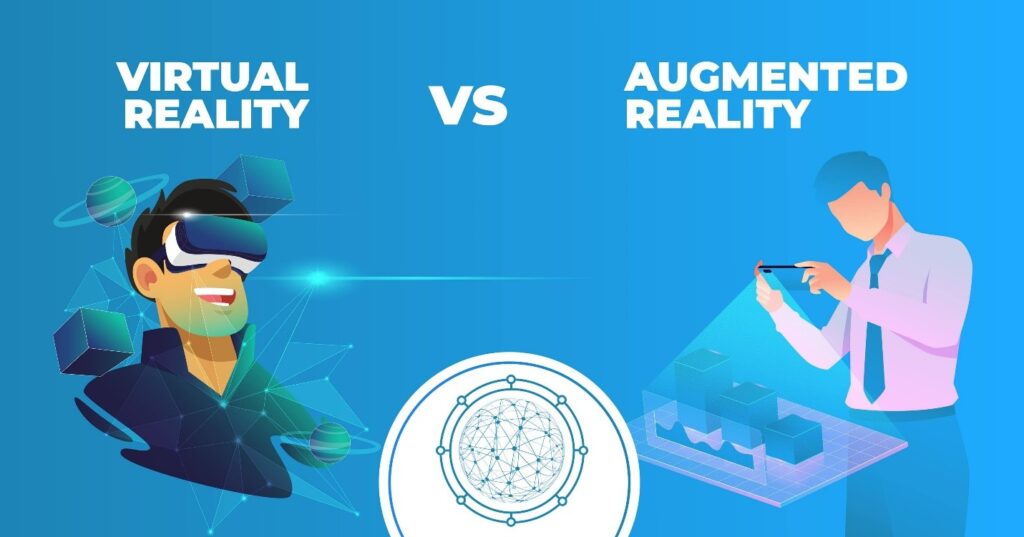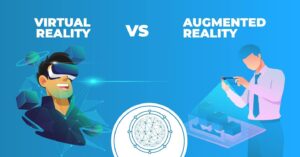Augmented Reality vs. Virtual Reality: Exploring the Key Differences

In the dynamic realm of immersive technologies, Augmented Reality (AR) and Virtual Reality (VR) have emerged as groundbreaking innovations, each offering unique experiences that blur the lines between the physical and digital worlds. In this blog post, we will delve into the distinct characteristics of AR and VR, exploring their applications, differences, and the impact they have on various industries.
Defining Augmented Reality and Virtual Reality
Augmented Reality (AR):
Augmented Reality enhances the real-world environment by overlaying digital information onto it. AR integrates computer-generated graphics, sounds, or other data seamlessly into the user’s view, providing an augmented perception of reality.
Virtual Reality (VR):
Virtual Reality, on the other hand, immerses users in a completely digital environment, shutting out the physical world. VR typically involves the use of headsets and controllers to create a fully immersive experience, transporting users to simulated realities.
Key Differences between AR and VR
Interaction with the Real World:
AR: Augmented Reality enhances the real world by adding digital elements while allowing users to remain connected to their physical environment.
VR: Virtual Reality creates a fully immersive, computer-generated environment, completely replacing the real world.
Hardware Requirements:
AR: AR can be experienced through devices such as smartphones, smart glasses, or heads-up displays.
VR: Virtual Reality often requires dedicated hardware, such as VR headsets and motion controllers, to provide a comprehensive immersive experience.
Applications:
AR: Commonly used in industries like gaming, education, healthcare, and retail for applications like gaming overlays, navigation, medical training, and virtual shopping experiences.
VR: Widely utilized in gaming, simulations, training, and entertainment, offering users the ability to completely immerse themselves in a virtual environment.
User Interaction:
AR: Users interact with both the real world and digital elements simultaneously, often through touch gestures, voice commands, or other interactive methods.
VR: Interaction is primarily within the virtual environment, with users using controllers or hand gestures to navigate and manipulate objects.
Immersiveness:
AR: Augmented Reality enhances the user’s perception of reality but doesn’t fully replace it.
VR: Virtual Reality provides a high level of immersion, transporting users to entirely new and digital environments.
Impacts on Industries
Education:
AR: Enhances learning experiences with interactive overlays and real-world context.
VR: Immerses students in simulated environments for hands-on training and experiential learning.
Healthcare:
AR: Assists surgeons with real-time data during procedures and aids in medical training.
VR: Provides therapeutic applications, exposure therapy, and simulations for medical training.
Gaming:
AR: Integrates digital elements into the real world for interactive gaming experiences.
VR: Offers fully immersive gaming environments where users can engage with the virtual world.
Conclusion
In the landscape of immersive technologies, both Augmented Reality and Virtual Reality play crucial roles, offering distinct experiences and applications. Whether it’s enhancing real-world interactions with AR or providing immersive simulations with VR, these technologies continue to shape the way we perceive and engage with the digital and physical realms. As technology advances, the line between AR and VR may continue to blur, opening up new possibilities for innovative applications and experiences in the years to come.






